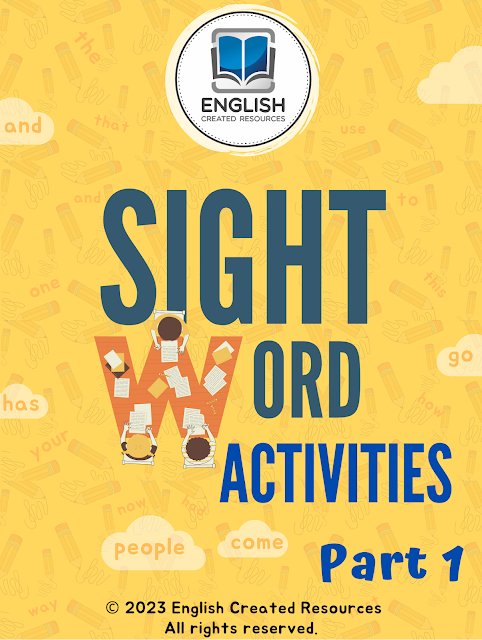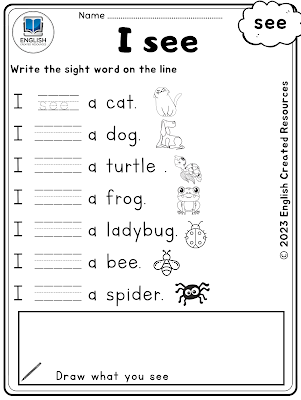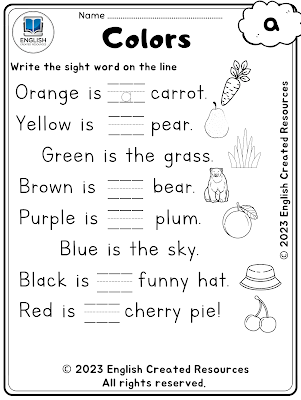Автор: Горбушина Оксана Сергеевна
Организация: МБОУ «СОШ №18»
Населенный пункт: Челябинская область, г. Миасс
Обучение чтению на английском языке — достаточно сложное занятие, так как есть много слов, которые читаются не по правилам, в большинстве случаев это ставит детей любого возраста в тупик, и поэтому усложняется процесс обучения чтению.
Как следствие педагог, который обучает ребенка данному виду навыка, должен владеть не просто методикой преподавания иностранного языка, а желательно современными способами преподавания, чтобы процесс обучению чтению проходил быстро, эффективно и увлекательно для детей.
Мой педагогический опят в школе составляет 11 лет, за это время мы проходили разные курсы повышения квалификации, но, к сожалению, лично я не нашла той «изюминки», за которую хотелось зацепиться и начать использовать в своей практике. Но 2 года назад случилось чудо, я познакомилась с фонетическим подходом в обучении чтению и понятием «sight words». Если о фонетическом подходе я слышала, то о понятие « sight words » в университете и на курсах повышении квалификации не говорили, поэтому я стала изучать эту тему более подробно, чтобы понять, как знание sight words может облегчить процесс обучения чтению.
Понятие «Sight words» было введено американским писателем Едвардом Уиллиан Долч в 1930 — 1940 годах. Слово « sight » с английского переводится как «взгляд», а «words» — слова. В русском языке такого понятия не существует, но можно провести аналогию с высокочастотными словами. Так вот, sight words – это слова, которые ребенку важно запомнить, чтобы научиться читать и писать. Их нужно запоминать целиком как образ, без необходимости разбивать их на буквы. Изучение sight words помогает детям быстрее научиться читать на ранних этапах. Как правило, дети запоминают слова и при чтении не задумываются, почему буква в этом слове так читается, вследствие этого увеличивается скорость чтения. Дальше перечислены некоторые примеры sight words: I, you, she, he, one, two, this, that, have, some, come и т. д.
Теперь давайте поговорим подробнее, как мы знакомимся с этими словами на занятиях с детьми возрастом от 5 до 10 лет.
Я предпочитаю вводить sight word, когда оно встречается в контексте урока или искусственно создаю ситуацию, что бы нужное слово встретилось. Так, например, мы с детьми запоминали языковую конструкцию „She is …“, и на этом этапе я ввела sight word «she».
На доске я пишу изучаемое слово и прошу детей посмотреть сначала на доску, а затем видео, где показывается параллельно графическое написание слова и его звуковое произношение. Затем после просмотра видео дети должны сказать мне, как оно произноситься. В своей работе я использую видео с ютуб канала «Preschool Prep Company» . Каждое видео – это маленькая история о слове, которая воспринимается с удовольствием.
После того, как мы познакомились со звуковым содержанием слова, дети вырезают фигуру понравившегося им животного или фрукта из бумаги и клеят на нее печатный вариант слова. Затем с помощью скотча крепят эту картинку на тонкую шашлычную палочку и втыкают ее в коробку, где «живут» у нас все sight words. Такие веселые палочки повышают мотивацию детей и позволяют педагогу быстро повторить с детьми все изученные sight words.
На следующем уроке мы опять обращаемся к нашим коробочкам, сначала вспоминаем уже изученные слова, а потом продолжаем работу над новым словом. На втором этапе дети делают рабочий лист « worksheet », который помогает ученикам запомнить написание слова. Эти рабочие листы можно найти в интернете и распечатать. Обычно они включают в себя следующие задания: найди слово и обведи его в кружок, обведи буквы слова, раскрась буквы разными цветами, найди слово и выдели его маркером, напиши его, вырежи буквы слова и приклей их в правильном порядке. Работа с рабочим листом занимает максимум минут 10, но зато дети начинают его узнавать. Однако этого не достаточно, чтобы запомнить его окончательно.
Кроме того, периодически на занятиях мы возвращаемся к sight words и играем с ними. На листах формата А4 я печатаю по одному изучаемому слову, раскладываю листы на полу, предварительно вспомнив с детьми какое слово как читается. Задание заключается в том, что дети должны наступить на то слово, которое называет учитель. Здесь важно время от времени перемещать листы на полу, так как некоторые дети запоминают не слово, а место где лежит слово. Данная игра активная, позволяет детям подвигаться, отдохнуть и заодно выучить sight words.
И последнее, что я создала для лучшего изучения sight words – это была интерактивная игра на сайте Wordwall. Wordwall – представляет собой многофункциональный инструмент для создания как интерактивных, так и печатных материалов. Игры, созданные на этом сайте, очень удобно использовать при дистанционном обучении. Мной было создано вращающиеся колесо, которое делится на несколько разноцветных секторов. В каждом секторе написано определенное sight word. Задача детей — крутить колесо и называть то слово, на которое покажет стрелка. Ребята играют в эту игру с большим интересом.
После того, как мы проходим через все эти этапы, обычно дети без проблем узнают изученные слова и они не вызывают у них никаких трудностей на всех этапах обучения чтению и письму. Чтобы читатель мог прочувствовать и понять, как детям нравится изучать sight words, я создала презентацию, где можно проследить все этапы изучения этих « обычных необычных » слов.
Список литературы:
1. http://didaktor.ru/wordwall-zamechatelnaya-kollekciya-shablonov-didakticheskix-igr/
2. https://letterland.ru/cards/
3. https://vk.com/@english.stepbystep-sight-words-chto-eto-i-kak-s-nimi-rabotat.
Приложения:
- file1.pptx.zip.. 1,9 МБ
- file0.docx.. 20,0 КБ
Опубликовано: 17.05.2021
When you’re a new teacher, the number of buzzwords that you have to master seems overwhelming at times. You’ve probably heard about many concepts, but you may not be entirely sure what they are or how to use them in your classroom. For example, new teacher Katy B. asks, “This seems like a really basic question, but what are sight words, and where do I find them?” No worries, Katy. We have you covered!
What’s the difference between sight words and high-frequency words?
Oftentimes we use the terms sight words and high-frequency words interchangeably. Opinions differ, but our research shows that there is a difference. High-frequency words are words that are most commonly found in written language. Although some fit standard phonetic patterns, some do not. Sight words are a subset of high-frequency words that do not fit standard phonetic patterns and are therefore not easily decoded.
We use both types of words consistently in spoken and written language, and they also appear in books, including textbooks, and stories. Once students learn to quickly recognize these words, reading comes more easily.
What are sight words and how can I teach my students to memorize them?
Sight words are words like come, does, or who that do not follow the rules of spelling or the six types of syllables. Decoding these words can be very difficult for young learners. The common practice has been to teach students to memorize these words as a whole, by sight, so that they can recognize them immediately (within three seconds) and read them without having to use decoding skills.
Can I teach sight words using the science of reading?
On the other hand, recent findings based on the science of reading suggests we can use strategies beyond rote memorization. According to the the science of reading, it is possible to sound out many sight words because they have recognizable patterns. Literacy specialist Susan Jones, a proponent of using the science of reading to teach sight words, recommends a method called phoneme-grapheme mapping where students first map out the sounds they hear in a word and then add graphemes (letters) they hear for each sound.
How else can I teach sight words?
There are many fun and engaging ways to teach sight words. Dozens of books on the subject have been published, including the much-revered Comprehensive Phonics, Spelling, and Word Study Guide by Fountas & Pinnell. Also, resources like games, manipulatives, and flash cards are readily available online and in stores. To help get you started, check out these Creative and Simple Sight Word Activities for the Classroom. Also, check out Susan Jones Teaching for three science-of-reading-based ideas and more.
Where do I find sight word lists?
Two of the most popular sources are the Dolch High Frequency Words list and the Fry High Frequency Words list.
During the 1930s and 1940s, Dr. Edward Dolch developed his word list, used for pre-K through third grade, by studying the most frequently occurring words in the children’s books of that era. The list has 200 “service words” and also 95 high-frequency nouns. The Dolch word list comprises 80 percent of the words you would find in a typical children’s book and 50 percent of the words found in writing for adults.
Dr. Edward Fry developed an expanded word list for grades 1–10 in the 1950s (updated in 1980), based on the most common words that appear in reading materials used in grades 3–9. The Fry list contains the most common 1,000 words in the English language. The Fry words include 90 percent of the words found in a typical book, newspaper, or website.
Looking for more sight word activities? Check out 20 Fun Phonics Activities and Games for Early Readers.
Want more articles like this? Be sure to sign up for our newsletters.
On this worksheet, students will color the word, color the letters in the word, trace the word, and write the word in a sentence.
Logged in members can use the Super Teacher Worksheets filing cabinet to save their favorite worksheets.
Quickly access your most used files AND your custom generated worksheets!
Please login to your account or become a member and join our community today to utilize this helpful feature.
Students will trace and circle the word Like. Then they’ll cut out the letters and glue them on the paper to make the word.
Trace the word. Write it in the sentence. Then draw a picture.
On this printable, students will color by number, circle the word, count the letters, trace, and print the word.
This page has large outline letters for painting or coloring the sight word Like.
Use glitter, stickers, or markers to trace the giant sight word.
Use an ink dabber, markers, or crayons to color the word like every time it appears on this worksheet.
Trace the word Like five times on the primary-ruled paper. Then try to write it two times.
Cut out the letters in the word Like and glue them in the correct spaces on the worksheet.
See Also
Sight Word Units
Check out our weekly sight word units, with printable worksheets and assessment materials.
More Individual Sight Words
We have worksheets for over 150 different sight words.
Learning Sight Words: “Like” Worksheets
Pin On Kindergarten Sight Word Worksheets Dr Mikes Math Games
Sight Word Like Worksheet
This Is A Worksheet For Learning The Sight Word Like Students
This Is A Sight Word Worksheet For The Word Like This Would Be
Free Learning Sight Words: “Like” printable Reading Writing worksheets for 1st Grade students. Click on the image to view or download the PDF version.
Related posts:
Short «E» Sounds Color Puzzle
Story Starters: What’s Going On?
Writing Workout: Supporting The Main Idea
Sight Word Tic-Tac-Toe
Picking «Just Right» Books
Opposite Words
Find And Fix The Mistakes: Capitalization And Punctuation
Fall Alphabet Order
Leave a Reply
Your email address will not be published. Required fields are marked *
Comment *
Name *
Email *
Website
Save my name, email, and website in this browser for the next time I comment.
This site uses Akismet to reduce spam. Learn how your comment data is processed.
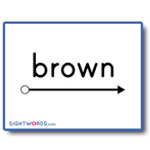
Overview
Learn the history behind Dolch and Fry sight words, and why they are important in developing fluent readers.
More

Lessons
Follow the sight words teaching techniques. Learn research-validated and classroom-proven ways to introduce words, reinforce learning, and correct mistakes.
More
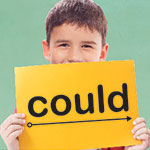
Flash Cards
Print your own sight words flash cards. Create a set of Dolch or Fry sight words flash cards, or use your own custom set of words.
More
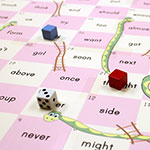
Games
Play sight words games. Make games that create fun opportunities for repetition and reinforcement of the lessons.
More
- Overview
- What Are Sight Words?
- Types of Sight Words
- When to Start
- Scaling & Scaffolding
- Research
- Questions and Answers
1. Overview
Sight words instruction is an excellent supplement to phonics instruction. Phonics is a method for learning to read in general, while sight words instruction increases a child’s familiarity with the high frequency words he will encounter most often.
The best way to learn sight words is through lots and lots of repetition, in the form of flashcard exercises and word-focused games.
↑ Top
2. What Are Sight Words?
Sight words are words that should be memorized to help a child learn to read and write. Learning sight words allows a child to recognize these words at a glance — on sight — without needing to break the words down into their individual letters and is the way strong readers recognize most words. Knowing common, or high frequency, words by sight makes reading easier and faster, because the reader does not need to stop to try and sound out each individual word, letter by letter.
Sight Words are memorized so that a child can recognize commonly used or phonetically irregular words at a glance, without needing to go letter-by-letter.
Other terms used to describe sight words include: service words, instant words (because you should recognize them instantly), snap words (because you should know them in a snap), and high frequency words. You will also hear them referred to as Dolch words or Fry words, the two most commonly used sight words lists.
Sight words are the glue that holds sentences together.
These pages contain resources to teach sight words, including: sight words flash cards, lessons, and games. If you are new to sight words, start with the teaching strategies to get a road map for teaching the material, showing you how to sequence the lessons and activities.
↑ Top
3. Types of Sight Words
Sight words fall into two categories:
- Frequently Used Words — Words that occur commonly in the English language, such as it, can, and will. Memorizing these words makes reading much easier and smoother, because the child already recognizes most of the words and can concentrate their efforts on new words. For example, knowing just the Dolch Sight Words would enable you to read about 50% of a newspaper or 80% of a children’s book.
- Non-Phonetic Words — Words that cannot be decoded phonetically, such as buy, talk, or come. Memorizing these words with unnatural spellings and pronunciations teaches not only these words but also helps the reader recognize similar words, such as guy, walk, or some.
There are several lists of sight words that are in common use, such as Dolch, Fry, Top 150, and Core Curriculum. There is a great deal of overlap among the lists, but the Dolch sight word list is the most popular and widely used.
3.1 Dolch Sight Words
The Dolch Sight Words list is the most commonly used set of sight words. Educator Dr. Edward William Dolch developed the list in the 1930s-40s by studying the most frequently occurring words in children’s books of that era. The list contains 220 “service words” plus 95 high-frequency nouns. The Dolch sight words comprise 80% of the words you would find in a typical children’s book and 50% of the words found in writing for adults. Once a child knows the Dolch words, it makes reading much easier, because the child can then focus his or her attention on the remaining words.
More
3.2 Fry Sight Words
The Fry Sight Words list is a more modern list of words, and was extended to capture the most common 1,000 words. Dr. Edward Fry developed this expanded list in the 1950s (and updated it in 1980), based on the most common words to appear in reading materials used in Grades 3-9. Learning all 1,000 words in the Fry sight word list would equip a child to read about 90% of the words in a typical book, newspaper, or website.
More
3.3 Top 150 Written Words
The Top 150 Written Words is the newest of the word lists featured on our site, and is commonly used by people who are learning to read English as a non-native language. This list consists of the 150 words that occur most frequently in printed English, according to the Word Frequency Book. This list is recommended by Sally E. Shaywitz, M.D., Professor of Learning Development at Yale University’s School of Medicine.
More
3.4 Other Sight Words Lists
There are many newer variations, such as the Common Core sight words, that tweak the Dolch and Fry sight words lists to find the combination of words that is the most beneficial for reading development. Many teachers take existing sight word lists and customize them, adding words from their own classroom lessons.
↑ Top
4. When to Start Teaching Sight Words
Before a child starts learning sight words, it is important that he/she be able to recognize and name all the lower-case letters of the alphabet. When prompted with a letter, the child should be able to name the letter quickly and confidently. Note that, different from learning phonics, the child does not need to know the letters’ sounds.
Before starting sight words, a child needs to be able to recognize and name all the lower-case letters of the alphabet.
If a student’s knowledge of letter names is still shaky, it is important to spend time practicing this skill before jumping into sight words. Having a solid foundation in the ability to instantly recognize and name the alphabet letters will make teaching sight words easier and more meaningful for the child.
Go to our Lessons for proven strategies on how to teach and practice sight words with your child.
↑ Top
5. Scaling & Scaffolding
Every child is unique and will learn sight words at a different rate. A teacher may have a wide range of skill levels in the same classroom. Many of our sight words games can be adjusted to suit different skill levels.
Many of our activity pages feature recommendations for adjusting the game to the needs of your particular child or classroom:
- Confidence Builders suggest ways to simplify a sight words game for a struggling student.
- Extensions offer tips for a child who loves playing a particular game but needs to be challenged more.
- Variations suggest ways to change up the game a little, by tailoring it to a child’s special interests or making it “portable.”
- Small Group Adaptations offer ideas for scaling up from an individual child to a small group (2-5 children), ensuring that every child is engaged and learning.
↑ Top
6. Research
Our sight words teaching techniques are based not only on classroom experience but also on the latest in child literacy research. Here is a bibliography of some of the research supporting our approach to sight words instruction:
- Ceprano, M. A. “A review of selected research on methods of teaching sight words.” The Reading Teacher 35:3 (1981): 314-322.
- Ehri, Linnea C. “Grapheme–Phoneme Knowledge Is Essential for Learning to Read Words in English.” Word Recognition in Beginning Literacy. Mahwah, NJ: L. Erlbaum Associates, 1998.
- Enfield, Mary Lee, and Victoria Greene. Project Read. www.projectread.com. 1969.
- Gillingham, Anna, and Bessie W. Stillman. The Gillingham Manual: Remedial Training for Students with Specific Disability in Reading, Spelling, and Penmanship, 8th edition. Cambridge, MA: Educators Publishing Service, 2014.
- Nist, Lindsay, and Laurice M. Joseph. “Effectiveness and Efficiency of Flashcard Drill Instructional Methods on Urban First-Graders’ Word Recognition, Acquisition, Maintenance, and Generalization.” School Psychology Review 37:3 (Fall 2008): 294-308.
- Shaywitz, Sally E. Overcoming Dyslexia: A New and Complete Science-Based Program for Reading Problems at Any Level. New York: Alfred A. Knopf, 2003.
- Stoner, J.C. “Teaching at-risk students to read using specialized techniques in the regular classroom.” Reading and Writing: An Interdisciplinary Journal 3 (1991).
- Wilson, Barbara A. “The Wilson Reading Method.” Learning Disabilities Journal 8:1 (February 1998): 12-13.
- Wilson, Barbara A. Wilson Reading System. Millbury, MA: Wilson Language Training, 1988.
↑ Top
Leave a Reply
Recent Blog Posts

Case Wars: Upper vs. Lower Case Letters
September 27, 2016
Some of our visitors ask us why all our materials are printed in lower-case letters as opposed to upper-case letters. We know that many preschool and kindergarten teachers focus on teaching upper-case letters first. The ability to recognize lower-case letters … Continued

Is It Dyslexia?
August 29, 2016
We sometimes get questions from SightWords.com visitors who are concerned that their child or grandchild may have a learning disability. Of particular concern is the possibility that their child might have dyslexia. Many people assume that dyslexia is a visual … Continued

SightWords.com at the Southeast Homeschool Expo
August 10, 2016
On July 29th and 30th, board members of the Georgia Preschool Association met at the Cobb Galleria Centre just outside Atlanta to attend the Southeast Homeschool Expo, a convention for homeschooling families and resource providers from across the Southeastern U.S. … Continued
© 2023 Sight Words: Teach Your Child to Read
Как можно облегчить “вхождение” в чтение? В этом поможет “волшебная кнопка”, благодаря которой ребенку будет проще бегло читать незнакомые английские тексты начального уровня.
Этой кнопкой являются высокочастотные слова (sight words), составляющие примерно 2/3 лексики, встречающейся в детских книжках начального уровня.
К sight words относят:
- Слова, которые не подчиняются правилам чтения phonics, например, was, two, laugh
- Слова, которые нельзя «показать», например, the, been
- Множество других слов, которые провинились тем, что всплывали и всплывают в детском чтиве с завидным постоянством
Существуют списки sight words, разработанные Дольчем в середине XX века. Всего слов 220, и они разбиты на уровни. Например, уровень Pre-K включает 40 слов: a, and, away, big, blue, can, come, down, find, for, funny, go, help, here, I, in, is, it, jump, little, look, make, me, my, not, one, play, red, run, said, see, the, three, to, two, up, we, where, yellow, you.
В дополнение к этому списку есть еще и список из 90+ существительных. Учить, так учить! Доктор Фрай пошел дальше и разработал список из 1000 слов, запомнив которые ребенок сможет бегло читать обычные газеты, книги.
Основной смысл заучивания списков заключается в том, чтобы в долговременную память ребенка попало как можно больше высокочастотных слов, автоматически узнаваемых впоследствии в процессе чтения. Тогда ребенок не тратит время на декодирование, читает бегло и уверенно.
Как вводить эти слова:
- постепенно, не больше 2-3 в день
- с помощью карточек, записав на доске или повесив над столом а ля слово дня
- в играх, проводилках, прописях
- через книги, специально разработанные для первого чтения (например, на книжках от Oxford Reading Tree всегда пишут, на какие слова направлен фокус)
Обязательно ли заучивать все три сотни из списка Дольча, чтобы ребенок зачитал? Нет. Из всего списка лишь 10% слов не подчиняются никаким правилам и являются камнем преткновения при чтении и письме. Остальные вполне подлежат фонетическому декодированию.
Ресурсы вам в помощь
sightwords.com – списки, готовые карточки любых размеров и т.п.
k12reader.com – хорошая организация списка Фрая.
Автор статьи – анломама, преподаватель, автор марафонов о живой природе Ася Виноградова
Научиться бегло читать на английском языке непросто. Это касается не только изучающих английский язык как иностранный, но и носителей языка. В связи с этим возник вопрос, есть ли определённый список наиболее употребительных слов, которые нужно выучить в первую очередь, чтобы облегчить процесс обучения чтению.
Да, есть. Существуют два списка слов, известные как список Дольча и список Фрая. Списки эти повсеместно используются в английских школах, разработано множество упражнений, в основу которых положены именно эти слова.
Оба этих списка составлены по принципу частотности употребления и направлены, как уже было сказано, на обучение детей беглому чтению.
Список Дольча составлен в 1936 году, он включает наиболее употребительные слова и слова-исключения, которые читаются не по правилам. Всего 220 слов. Это не так уж и много. Но эти 220 слов составляют до 75% слов, встречающихся в детских книгах. Просто фантастика!
Слова из списка Дольча (220 слов):
- Pre-primer (40 слов): a, and, away, big, blue, can, come, down, find, for, funny, go, help, here, I, in, is, it, jump, little, look, make, me, my, not, one, play, red, run, said, see, the, three, to, two, up, we, where, yellow, you
- Primer (52 слова): all, am, are, at, ate, be, black, brown, but, came, did, do, eat, four, get, good, have, he, into, like, must, new, no, now, on, our, out, please, pretty, ran, ride, saw, say, she, so, soon, that, there, they, this, too, under, want, was, well, went, what, white, who, will, with, yes
- 1st Grade (41 слово): after, again, an, any, as, ask, by, could, every, fly, from, give, giving, had, has, her, him, his, how, just, know, let, live, may, of, old, once, open, over, put, round, some, stop, take, thank, them, then, think, walk, were, when
- 2nd Grade (46 слов): always, around, because, been, before, best, both, buy, call, cold, does, don’t, fast, first, five, found, gave, goes, green, its, made, many, off, or, pull, read, right, sing, sit, sleep, tell, their, these, those, upon, us, use, very, wash, which, why, wish, work, would, write, your
- 3rd Grade (41 слово): about, better, bring, carry, clean, cut, done, draw, drink, eight, fall, far, full, got, grow, hold, hot, hurt, if, keep, kind, laugh, light, long, much, myself, never, only, own, pick, seven, shall, show, six, small, start, ten, today, together, try, warm
Список существительных (95 слов) , дополнение к основному списку:
- apple, baby, back, ball, bear, bed, bell, bird, birthday, boat, box, boy, bread, brother, cake, car, cat, chair, chicken, children, Christmas, coat, corn, cow, day, dog, doll, door, duck, egg, eye, farm, farmer, father, feet, fire, fish, floor, flower, game, garden, girl, good-bye, grass, ground, hand, head, hill, home, horse, house, kitty, leg, letter, man, men, milk, money, morning, mother, name, nest, night, paper, party, picture, pig, rabbit, rain, ring, robin, Santa Claus, school, seed, sheep, shoe, sister, snow, song, squirrel, stick, street, sun, table, thing, time, top, toy, tree, watch, water, way, wind, window, wood
Следует отметить, что существует несколько методик обучения детей младшего возраста чтению. Одна из них — чтение целых слов с использованием флэш-карточек. Длина слова в основном 5 букв. Это та методика, которая положена в основу нынешних белорусских учебников для начальной школы. Второй способ — чтение по правилам. Исследования показали, что до 5 лет лучше обучать чтению целыми словами, а после 5 можно обратиться и к правилам.
Когда дети учатся читать, им часто приходится сталкиваться со словами «the,» «of,» «and,» «a» or «to» визуально, зрительно, by sight. Эти слова узнаются глазом, но образов, картинок в памяти не вызывают. Это ведь служебные слова. Возможно, этот факт и дал название второму списку слов, автором которого является Эдвард Фрай — «1000 Fry Sight Words» (1996) . Известен этот список также под названием «Fry 1000 Instant Words.» Фактически Фрай продолжил список слов, составленный Дольчем.
Интересно, что первые 100 слов из списка Фрая составляют 50% всех наиболее употребительных слов ( частотность употребления убывает к концу списка). Узнавание этих слов позволяет ускорить темп чтения и помогает детям приобрести уверенность при чтении.
Небольшое отступление. На сайте одного современного английского писателя прочла следующее: «Late last century, Dr. Edward B. Fry developed an extensive list of the most common words used when teaching reading, writing and spelling. His list—called The Fry Instant Words—has been a boon to understanding fluency and reading comprehension. While helpful for educators, Fry’s findings can be a little depressing for anyone who yearns for verbal variety.»
Получается, что списки хороши для обучения чтению, но не угодили писателю, стремящемуся к разнообразию вокабуляра.
Рекомендую своим читателям обратить внимание вот на этот сайт: 1000 слов Фрая. Здесь Вы найдёте не только списки, но и карточки по всей тысяче слов.
Слова разбиты на группы по 100 слов. В списках слова расположены по популярности. Первый список из ста слов иногда называется «Word Wall Words». Все эти списки, повторюсь, помогают ребёнку быстро научиться бегло читать.
Второй сайт, который привлёк моё внимание, посвящён непосредственно тренировке слов в упражнениях. Советую для начала разобраться с первой ссылкой, затем, войдя в курс дела, ознакомиться со второй, Sight Words, Vocabulary. Этот сайт вообще просто находка. Полный курс по 1000 слов с потрясающим разнообразием упражнений. Правда, навигация там не очень.
После того, как Ваш ребёнок усвоит слова из этих списков, соотношение незнакомых слов в тексте будет 3:1, что считается оптимальным при изучении языка.
Если Вас заинтересовал список Дольча, то списки слов можно скачать бесплатно с сайта www.uniqueteachingresources.com. Карточки разного уровня отличаются цветом.
Note: Данная статья не является рекомендательной, это компиляция изученного мной материала по обучению чтению детей младшего возраста носителями языка.
What are sight words?
Pre-Primer Sight Words. Sight words, or high frequency words as they’re often known, are vocabulary words that appear frequently in verbal and written communication – words such as the, come, to and where. Unfortunately for those learning to read, many of these words are irregularly spelt, making them difficult to sound out phonetically.
Sight words are common words that schools expect kids to recognize instantly. Words like the, it, and and appear so often that beginning readers reach the point where they no longer need to try to sound out these words. They recognize them by sight.
Building up a large base of sight words helps kids become faster, more fluent readers. When kids master a sight word, they no longer have to pause to blend its letter-sounds together. And they don’t have to think about spelling rules.
Some schools call sight words high-frequency words. Other terms for sight words include star words, core words, and popcorn words. Why popcorn? Because these words “pop up” so frequently in reading and writing.
Why is it important to learn sight words?
As children read, if they stop to phonetically decode a word the flow of text is interrupted, and comprehension of what has been read can be lost as the reader’s focuses on the task of decoding. It is for this reason that most reading programs recommend that children develop the ability to recall high frequency words automatically or ‘on sight.’ Children with a good grasp of the most regularly used sight words are able to read more fluently which, in turn, supports good reading comprehension.
Using sight word activities like games, centers, and hands-on manipulatives will help your students master skills without even knowing that they are learning!
Make sight word learning a regular part of your literacy block and switch out activities often. By setting aside time for focused attention on sight word learning, you’ll be surprised how quickly your young readers blossom.
It’s critical to teach students to memorize sight words as a whole so that they can recognize them immediately (within 3 seconds) without having to use any strategies to decode them. Imagine how frustrating reading would be if you had to stop and sound out every little word!
Once readers master sight words they are able to understand at least half of the words in any particular text. By eliminating the need to stop and decode sight words, readers are able to focus on words that are less familiar and more difficult.
Using phonics or picture-reading skills for words like these is ineffective for young readers, especially for those who are in the early stages of developing their decoding skills. Therefore we need to know these words by “sight”.
When it comes to learning a skill, the importance of self-efficacy (an individual’s belief in his ability to achieve a goal) cannot be overstated. Children are considerably more inclined to learn something new if they believe they can do it. Thus, enhancing their confidence is key.
Memorizing sight words has now been scientifically proven to induce confusion in young readers since they get to reading things “in context”. For example, in the absence of visual clues, imagine that there are slight misspellings in a common word used in a paragraph – say “whose”, “who’s” and “whoosh”. If the correct usage is the first one, children will often autocorrect in the other two cases and read as if “whose” had been repeated thrice.
Samples From the Worksheet
With all the diverse approaches at our disposal today, it can be challenging to opt for tactics and activities that are best designed to help kids become confident, fluent readers. To compound the situation, children, parents, and instructors are all heavily overworked! As an adult immersed in the hustle and bustle of life, you may be continuously faced with the task of deciding ways to spend quality time with your children. A productive way to utilize the time you spend with your children is by giving them sight words education.
Learning to read is obviously tricky business. There are so many skills and strategies that need to come together to create fluent readers. One of the first steps in helping our young students get started is focusing on sight words.
Read Next
January 18, 2023
Ocean Animals Sight Word Poems
January 18, 2023
Shape Songs
January 17, 2023
Color Word Poems
January 16, 2023
Sight Word Poems Read and Draw
August 1, 2022
Pre-Primer Sight Words
December 18, 2020
Sight Words Collection
December 18, 2020
Sight Words Part 1
December 7, 2020
Sight Words ( 40 Printable Cards )
October 2, 2020
Science Poems and Songs
May 22, 2020








